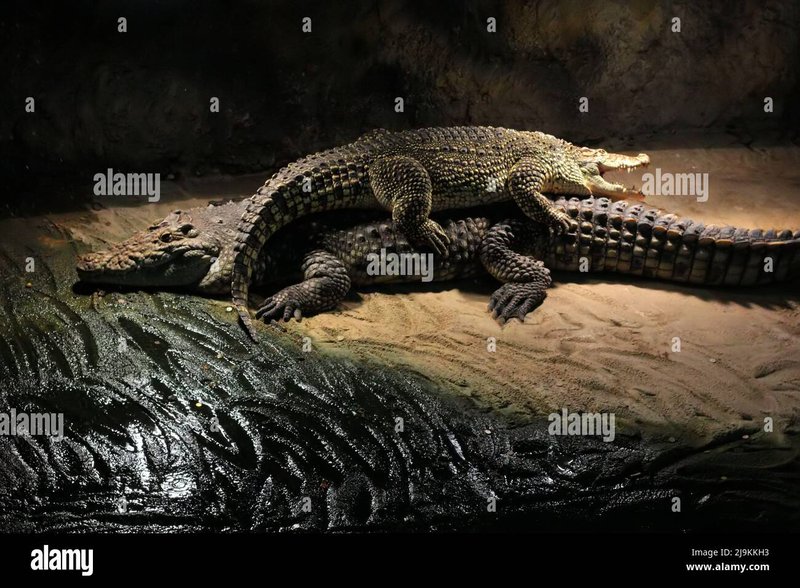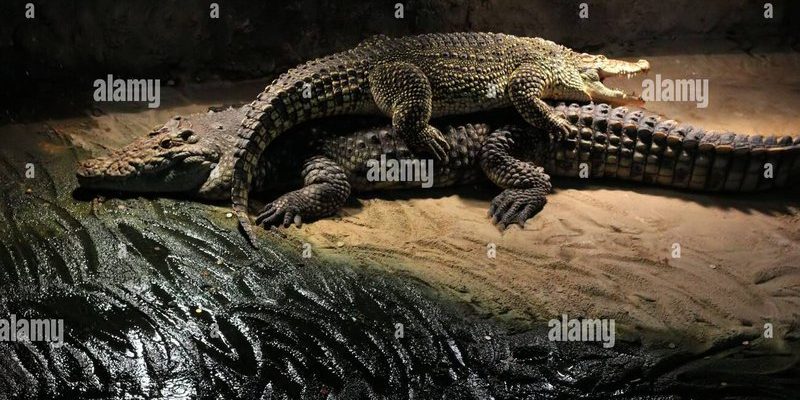
Imagine a protective mother, much like a lioness guarding her cubs. That’s how crocodile moms are! They exhibit nurturing behaviors that are both fascinating and crucial for the survival of their hatchlings. In this article, we’ll explore how crocodiles raise their young in the wild, highlighting the stages of their parental care and the challenges they face. So, grab a cup of coffee, and let’s dive into the wild world of crocodile parenting.
Where Crocodiles Nest and Lay Eggs
Crocodiles are selective about where they lay their eggs, often creating nests in secluded, safe locations. They typically choose sandy riverbanks or shores of lakes, where the environment offers some protection from predators. This choice is vital, as it helps keep their eggs safe until they hatch. Most species lay between 20 to 80 eggs, depending on the type of crocodile.
After building a nest using vegetation, mud, and sand, the female crocodile lays her eggs and carefully covers them up. You might wonder why they bother to cover them. Well, this helps maintain the right temperature for the eggs and shields them from potential threats. Interestingly, the temperature of the nest can even determine the sex of the hatchlings. Warmer nests tend to produce males, while cooler temperatures usually yield females.
Once the eggs are laid, the mother remains nearby to guard her nest fiercely. Here’s the thing: crocodiles are known for their fierce nature, but maternal instincts kick in when it comes to their young. This nurturing behavior is quite remarkable and sets them apart from many other reptiles.
The Hatching Process: When the Eggs Crack Open
After about 60 to 90 days, it’s time for the little crocodiles to make their grand entrance into the world. Hatching is a crucial stage in their life cycle, and it’s a sight to behold. The hatchlings use a special egg tooth, often called an “egg tooth,” to break through the shell. This tooth is temporary and will fall off shortly after they hatch.
Once they’re out, you might picture tiny crocodiles scrambling around, but they actually rely on their mother during this vulnerable stage. The mother hears their chirps—yes, crocodile hatchlings make sounds—and she responds to these calls. This communication is essential, as she helps them reach the water, guiding them safely through what can be a dangerous environment.
This nurturing doesn’t stop right after they hatch. Some species of crocodiles, like the American crocodile, even carry their young in their mouths to help them reach the safety of the water or other hiding spots. It’s a surprisingly tender moment in the life of such a fierce predator.
The First Days of Life: Protection and Guidance
After hatching, the little crocodiles face numerous threats, from larger predators to environmental dangers. You might think it’s just every creature for itself, but that’s not the case here. The mother crocodile stays close, watching over her young as they explore their new world.
Here’s where things get really interesting: mother crocodiles are known to be incredibly protective. They can often be seen chasing off potential threats and keeping their brood close together. You might imagine a lioness defending her cubs, and that’s a fitting comparison. This protective behavior significantly increases the hatchlings’ chances of survival.
In their early days, these young crocodiles rely on their mother for food and security. The mother may catch small fish or other prey and bring it to the young ones, teaching them how to hunt as they grow. This guidance and support during their formative days are essential as they learn the skills necessary to survive in the wild.
Learning to Hunt: Skills Development
As the young crocodiles grow, they start to develop their hunting skills. This stage is critical, as learning to find food impacts their survival and growth. Typically, the mother leads them to shallow waters, where they can practice catching smaller prey.
In these shallow waters, they may target fish, insects, or even small frogs. Crocodiles are naturally stealthy hunters, and the mother often demonstrates the art of patience. You might picture her lying still, waiting for the right moment to strike. The young ones observe and learn, picking up these skills as they mimic their mother’s behavior.
The mother crocodile’s presence is a significant advantage, as she continues to offer protection from larger predators. She also helps them understand the importance of being quiet and still in the water. As they hone their hunting skills, they grow more confident and capable of surviving on their own.
Independence: When Do Young Crocodiles Leave Home?
As the months pass, the young crocodiles gradually become more independent. They often stay with their mother for about a year, but that period can vary by species and environmental conditions. During this time, they learn essential survival skills, but eventually, they need to venture out on their own.
You might be wondering why leaving home is so important. Young crocodiles must establish their territory and find their own food sources. Staying with their mother too long could hinder their development and lead to competition for resources.
Once they leave, they continue to use the skills they learned from their mother to adapt to their new surroundings. It’s a transition that marks a new chapter in their lives, ensuring they can thrive in the wild.
Challenges in Raising Young Crocodiles
Despite their protective nature, raising young crocodiles comes with numerous challenges. One major threat is environmental changes, like habitat destruction and climate change. These factors can affect where they nest and how well the young crocodiles survive.
Predation is another significant issue. While mother crocodiles are watchful, they can’t protect their young from every potential threat. Birds, larger fish, and even other reptiles may attempt to eat the hatchlings. The survival rate for young crocodiles is notoriously low—estimates suggest that only around 10% make it to adulthood.
Here’s the thing: the delicate balance of their ecosystem plays a huge role in their survival. Preserving their natural habitats and protecting them from pollution and human encroachment is crucial in ensuring these fascinating creatures can continue to thrive.
Why Understanding Crocodile Parenting Matters
Learning about how crocodiles raise their young offers insights into their behaviors and the challenges they face. It’s a reminder of the complexity of life in the wild and the importance of conservation efforts. Understanding these parenting strategies helps us appreciate the delicate balance of nature and the role each species plays within it.
Crocodiles may appear fearsome, but their dedication to their young shows a different side of their nature. By protecting their hatchlings and teaching them to hunt, mother crocodiles ensure the survival of their species. This highlights the need for conservation initiatives, as these incredible reptiles play vital roles in their ecosystems.
As we wrap up our exploration of crocodile parenting, it’s clear that these creatures display more depth and care than many might assume. So, the next time you think of crocodiles, remember the loving mothers underneath those tough exteriors, working hard to raise the next generation. By protecting their habitats and understanding their behaviors, we can help ensure that the crocodile’s legacy continues for years to come.

